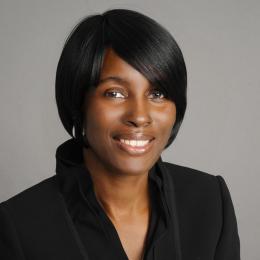There has been a lot of focus on diversity, with the American Bar Association (ABA) introducing numerous resolutions, corporate requirements for working with diverse law firms, and goals to promote diversity in legal departments. Yet a tremendous struggle remains to exemplify a diverse legal landscape.
Diversity is a struggle for many sectors, but the healthcare industry presents its own unique challenges. In a highly regulated industry like ours, many senior law firm partners tend to be older, white men, particularly in high-stakes, high-profile areas. As an organization with 50 hospitals in two different countries and thousands of individual providers and employees, Bon Secours Mercy Health, Inc. is committed to building a culture of and advancing diversity in the legal sphere.
One of the ways we prioritize diversity is by ensuring the outside counsel we work with have as much commitment to diversity as we do. We expect our law firms to staff matters with diverse attorneys and meet diversity goals, but in-house and outside counsel are a team and need to work together to achieve these goals.
This is the multiprong approach we use to help us work with our law firms on these goals:
1. Providing law firms with clear guidelines
Set diversity guidelines publicly and clearly with outside counsel. Bon Secours Mercy Health’s diversity guidelines have been in place for years, and in 2016 ABA published Resolution 113 to increase diversity in the legal profession. Both of these ensure that our law firms are familiar with our expectations.
2. Surveying outside counsel regarding diversity
Regularly query outside counsel about the demographics of their attorneys. There was an instance when the diversity records held by a local bar association did not match our own records on a specific firm. We wanted to ensure our records showing higher diversity were accurate, so we reached out to the bar association and the law firm. It turned out, the firm had simply misread part of the survey and was able to correct the information to accurately reflect their demographics, and we were able to ensure our diversity standards were met.
3. Tracking hours worked by diverse timekeepers
Track and measure the diversity of outside timekeepers. The Enterprise Legal Management (ELM) solution LexisNexis CounselLink provides analytics and insights that allow departments to monitor and back up diversity efforts. We rely on CounselLink to require our law firms to submit information on the diversity of partners and associates who are handling our work. Until law firms submit information regarding the race and gender of timekeepers, their invoices are automatically rejected.
4. Regularly communicating with outside counsel
An annual reminder of diversity guidelines ensures their completion and can open beneficial conversations about diversity expectations. Bon Secours Mercy Health reminds law firms of guidelines about once a year, and often communicates with them about the importance of diverse legal professionals receiving opportunities to develop high-end skills and be assigned to challenging, mission-critical legal tasks.
Developing a more diverse group of attorneys is both the right thing to do, and the smart thing to do. Diverse attorneys bring a wealth of knowledge and perspective that is critical to helping us in our mission of changing the healthcare landscape and building healthier communities. Data and analytics are an indispensable tool in measuring our outside counsel’s performance objectively and consistently. CounselLink allows us to tap into accurate diversity numbers and measure diversity performance using data and proof points. Knowing the demographics of the attorneys who work for you can be used to constantly improve diversity numbers and achieve a more diverse legal landscape and better results.




